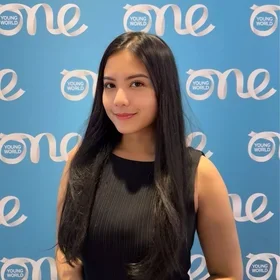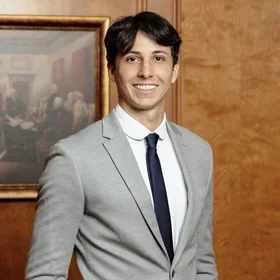Ian Galinson visited New York Times headquarters in midtown Manhattan as part of his Sustainability Management course Writing about Global Science for the International Media, taught by Claudia Dreifus. Dreifus is a science journalist whose work has appeared in The New York Times Magazine, The Atlantic, The Chronicle of Higher Education, Columbia Magazine, and Smithsonian, among other publications.
In Dreifus’s course, students examine what makes science journalism different from business or academic writing and then write real op-eds, investigative stories, event coverage articles, profiles, and more. Alums have been published in The New York Times and other publications including Science Times, Science, Consilience, and BuzzFeed.
Dreifus was able to give her students the unique opportunity to visit The New York Times because of her extensive work and relationship with the Times. Ian Galinson recounts and reflects on the experience.
–
By Ian Galinson (’23SPS, Sustainability Management) | Full-time
In the heart of midtown Manhattan stands a regal, 52-story testament to the skill of famed Italian architect Renzo Piano. It’s only appropriate that a building of such grandeur is the headquarters of The New York Times.
This past Monday, my peers and I, mostly students from Professor Claudia Dreifus’s course Writing about Global Science for the International Media, were granted an exclusive tour of The New York Times’ private museum, courtesy of its curator, former Times journalist David Dunlap.
Professor Dreifus’s course focuses on the translation of scientific research and knowledge into comprehensive journalism. Assignments include op-eds, Q&As, and long-form pieces.
We took an elevator up to the 15th floor, where we passed by signed pictures of United States presidents dating back to Theodore Roosevelt. All were either inscribed to the Times or to A.G. Sulzberger, the Times publisher. And beyond the presidential gallery: the museum itself.
One moment inside was all it took to grasp the sanctity of the space. Dunlap’s meticulous attention to chronological accuracy, unbiased recounting, and object-based storytelling stood out immediately. No detail was spared, including but not limited to the Times’ own shortcomings over the years.
The Times, we learned, initially reported on the Holocaust’s atrocities quite poorly, relegating the harrowing should-be headlines to subheads on middle pages. Times editors sought to remediate this blunder, devoting much more front-page real estate to Holocaust coverage by the end of World War II.
Through preserved headlines and black-and-white photographs, we traveled from the American Civil War to the more recent series of wars in the Middle East. We learned of the revolutionary, mechanized lightboard on the old Times headquarters that sprung back to life to announce Japan’s surrender at the close of the Second World War. We saw the threatening court orders that brave Times writers scrutinized and subsequently refused to comply with in order to publish the hidden story of the U.S.’s involvement in Vietnam.
And among these objects, too, were the stories left unpublished. A headline reading “Madam President” hung sans photo in an area devoted to the 2016 election.
Most striking to me, though, was a series of artifacts illustrating the dangers of journalism: a shattered camera lens, a piece of U.S.-made bomb shrapnel. Dunlap assured us that these objects were not merely encountered but retrieved—the lens from a Times reporter’s camera smashed during the Jan. 6 insurrection, the bomb shrapnel evidence of friendly fire on a journalist abroad.
On-the-ground reporters risk their lives to disseminate an unadulterated portrait of our world.
A well-curated museum imbues the past with present meaning. Dunlap’s exemplary work at the Times museum does just that. But the red pen comes down fast. I only hope more people get the chance to witness this draft.
The Columbia University M.S. in Sustainability Management provides students cutting-edge policy and management tools they can use to help public and private organizations and governments address environmental impacts and risks, pollution control, and remediation to achieve sustainability. The program is customized for working professionals and is offered as both a full- and a part-time course of study.
The Sustainability Management application deadline for fall 2023 is May 15, 2023. Learn more here.


